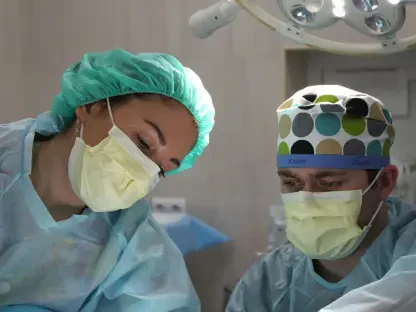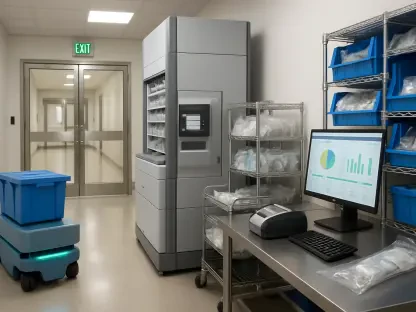Recent research from Case Western Reserve University has uncovered that bacteria infiltration occurs in the brain following the implantation of medical devices, presenting significant implications for the future design of brain implants used to treat neurological disorders. This discovery shifts the current understanding, which largely focused on the immune system’s response to such implants, by introducing the critical role bacteria, including those from the gut, play in the inflammation process.
Genetic Investigation of Bacterial Presence
Identifying Bacterial DNA in Mouse Models
The research team, led by Professor Jeff Capadona, used implanted microelectrodes in mouse models to study the presence of bacterial DNA in the brain. Through these investigations, scientists detected bacterial DNA, a clear indication that the usually sterile central nervous system environment was contaminated post-implantation. This breakthrough led them to reevaluate the blood-brain barrier, which was previously believed to remain mostly impervious to such invasions.
The discovery suggested that the process of implanting microelectrodes might be causing slight breaches in the blood-brain barrier, thus enabling the migration of bacteria. The implications were profound, as it pointed toward a possible identifiable route through which bacteria enter the brain, thus raising serious concerns about the longevity and safety of neural implants used in medical treatments. This breach may significantly amplify the body’s inflammatory response, potentially compromising the intended efficacy and the long-term stability of the implanted devices.
Discovery of Gut-Linked Bacteria
One particularly striking finding was that some of the bacteria discovered in the brain had strong links to the gut microbiome. This connection is intriguing, underscoring how events in one part of the body, such as the gut, could have far-reaching impacts on the brain, especially in the presence of an invasive procedure like implantation. Identifying gut-linked bacteria implicates intestinal health and barriers as factors that might contribute to brain infections post-implantation, indirectly holding implications for broader neurological health.
These findings raise the need for more integrated medical care approaches when dealing with brain implants, potentially including pre-implantation gut health assessments and targeted antibiotic regimens. While antibiotics have shown potential in combating bacterial invasion, their prolonged use brings forth concerns over resistance and side effects, thereby emphasizing the urgency of discovering permanent solutions rather than temporary fixes.
Impact on Neurological Health and Device Design
Broad Implications for Neurological Disorders
The bacteria identified were not only varied but also known to be involved in triggering severe neurological conditions such as Alzheimer’s disease, Parkinson’s disease, and stroke. This broadens the scope beyond mere device failure to a looming threat of exacerbating or potentially initiating critical health issues. It puts a spotlight on the necessity of considering bacterial contamination in the design and development of brain implants going forward.
With the recognition that bacterial contamination can play such a destructive role, the research highlights the need to incorporate antibacterial properties or consider novel materials that could resist bacterial colonization. This could transform the landscape of brain implants, spurring innovation toward safer and more reliable devices beyond the traditional focus on biocompatibility alone.
A Call for Revolutionary Approaches
Professor Capadona emphasizes that this new understanding should revolutionize both the design and maintenance of brain implants by prioritizing bacterial contamination. There is a pressing need to integrate new antibacterial strategies in the design phase without solely relying on post-implantation interventions. Future brain implants might need coatings, materials, or even structures designed to actively deter bacterial settlement and proliferation.
This paradigm shift requires collaboration across multiple fields—neuroscience, microbiology, materials science, and bioengineering—to develop comprehensive solutions that account for the multifaceted presence of bacteria. With ongoing and future studies expanding to other types of brain implants, such as ventricular shunts, and extending research to human subjects, it is anticipated that broader, more inclusive strategies can be formulated to prevent bacterial invasion effectively.
Funding and Support for Continued Research
Significant institutional and governmental support has been pivotal in facilitating this research. Funding from the U.S. Department of Veterans Affairs, National Institutes of Health, Department of Defense, and the Donnell Institute Professorship Endowment underscores the critical importance and belief in the potential for revolutionary advancements in neural implants. This collaboration illustrates a collective effort towards solving a problem that affects many, working to ensure the health and safety of patients relying on these devices for improved quality of life.
Future Directions for Brain Implant Technologies
Recent research conducted by Case Western Reserve University has revealed that bacteria infiltrate the brain following the implantation of medical devices. This finding carries profound implications for the design of future brain implants used to address neurological disorders. Historically, the focus has primarily been on the immune system’s response to these implants; however, this new discovery underscores the significant role that bacteria, including those originating from the gut, play in the inflammation process associated with such devices. The research alters the current understanding by highlighting bacterial involvement, thereby opening new avenues for improving the safety and efficacy of brain implants. This shift necessitates a reevaluation of how brain implants are designed and calls for innovation to mitigate bacterial infiltration and reduce inflammation. Moving forward, addressing both immune responses and bacterial factors will be crucial in developing next-generation devices for treating neurological conditions.









